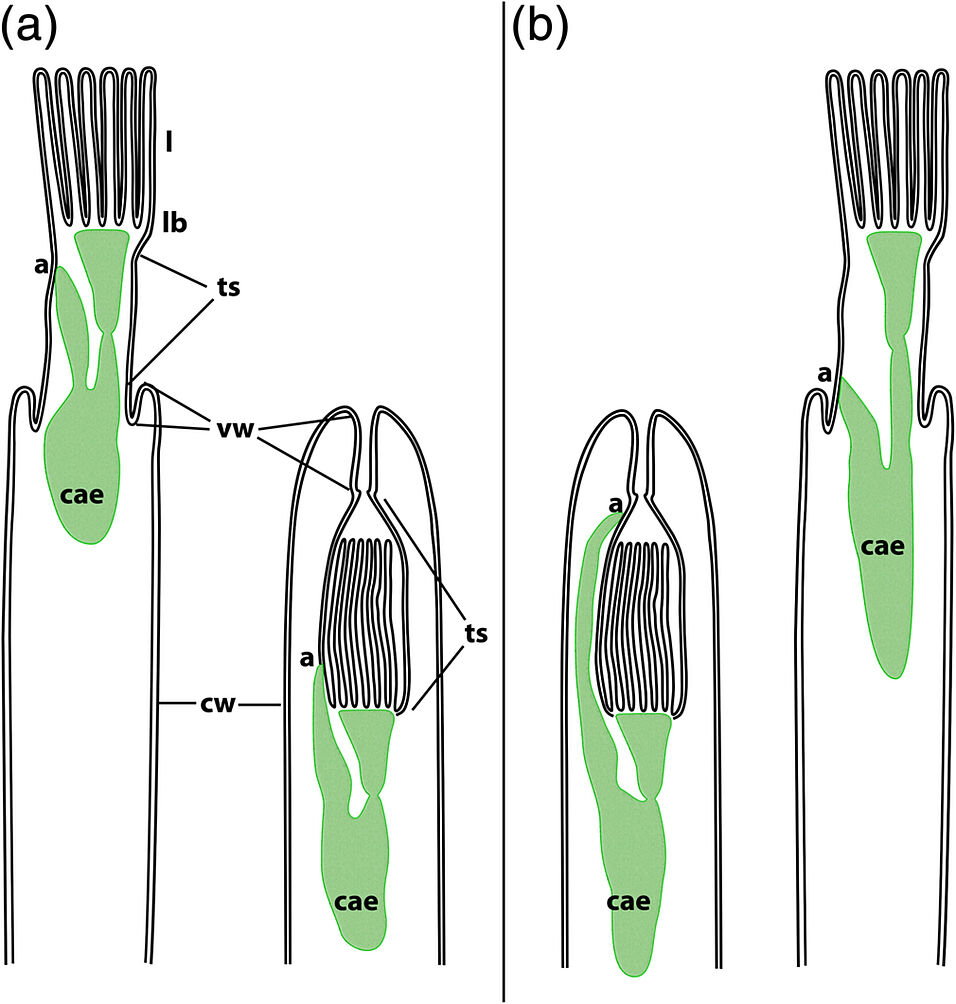Schwaha T (2020).
Journal of Morphology. 2020;1–9.https://doi.org/10.1002/jmor.21146
Abstract
Ctenostome bryozoans are a small group of approximately 350 currently described species that remain inadequately investigated anatomically. Recently, the importance of soft body morphology of zooids including the digestive tract has become more evident for addressing various biological aspects such as systematic, functional, or phylogenetic analyses. Particularly, the position of the anus shows considerable variation in ctenostomes and in its extreme form can either be at the lophophoral base or at the vestibular wall. However, it has never been analysed in a broader systematic, phylogenetic, or functional context. Hence, the purpose of this study is to assess the distribution of anus position among ctenostomes, analyse whether zooidal or colonial morphology affects anus position, and draw first conclusions on its functional effects. The survey shows that a vestibular anus is ubiquitously present in alcyonidioideans and several, probably closely related, walkerioideans. In other groups such as boring forms, it appears more patchily distributed, or in some currently unassignable genera, such as Monobryozoon , supports a closer relationship to alcyonidioideans. Other zooidal or colonial characters such as tentacle number or zooidal density in the colony do not show a distinct correlation to the position of the anus. It appears that the shift of the anus into a vestibular area occurred once or twice among ctenostomes; the reasons and functional effects remain unknown. Future important aspects of defecation research in bryozoans are discussed.

